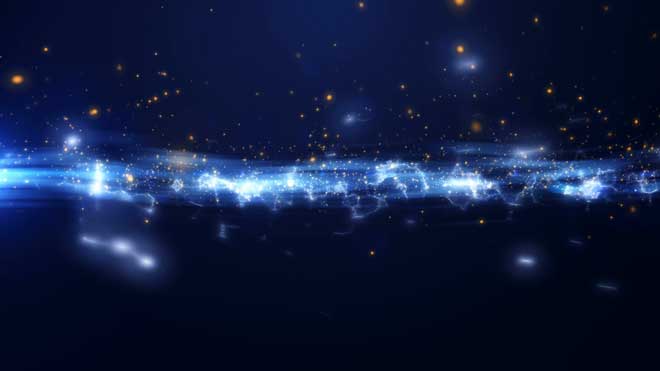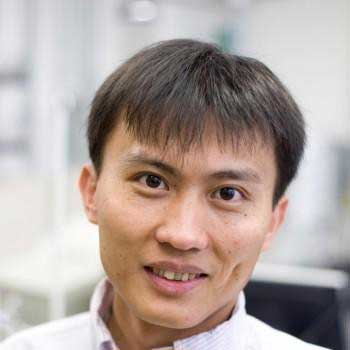'Fiction' technology: Generating electricity from a mixture of waste water and seawater
In the short term, new technology could allow coastal wastewater treatment plants to operate by their own energy, no longer emitting carbon. Further, we will think of unimaginable things.
Salt is also a source of energy. At first glance, I will think that this is alchemy turning stone into gold, but science is still magic but true magic. Stanford researchers have successfully developed technologies to collect renewable energy in coastal areas, where water and salt water are delivered. This special power is called blue energy , which is also a common name for all kinds of electricity with production processes related to the sea.
More specifically, new technology is cheap enough to be applied immediately and sustainably enough to take into account long-term issues.

This special power is called blue energy - blue energy.
In the new study report, published in ACS Omega of the American Chemical Society, scientists describe an advanced battery device that allows coastline wastewater treatment plants to create energy to operate, no need to connect to the national grid.
" Blue energy - blue energy is an abundant source of renewable energy and no one has explored it ," said co-author Kristian Dubrawski. 'Our battery is a new step in energy-free storage technology, without the need for a physical operation or an input power source .'
Dubrawski works with research co-author Craig Criddle, currently a professor of environmental engineering, known for his energy technology optimization projects; Criddle himself was the one who introduced the initiative to apply this system to coastal wastewater treatment plants. The idea of a battery system using salt and fresh water comes from two scientists, Yi Cui and Mauro Pasta, two people working in the field of material science and engineering.


Scientist Yu Cui (left) and Craig Criddle (right).
In the test, the research team closely observed the ability to generate energy from the combination of wastewater from the Palo Alto Regional Water Quality Control Plant and the seawater taken from the nearby Crescent Bay. After more than 180 cycles of charging and discharging, the battery still retains 97% of performance.
This technology can be installed anywhere in the presence of both freshwater and saltwater, but testing at the wastewater treatment plant is a wise decision, providing a full-cost case study. treatment. The wastewater treatment plant, which consumes a lot of energy, not to mention the possible consequences of a power outage.
When giving coastal water treatment plants a closed energy supply system, we will have a multi-target arrow.

Wastewater treatment plant in Los Angeles, the ideal place to apply new technology.
Each cubic meter of freshwater mixed with seawater generates about 0.65 kilowatts of electricity hours, enough for 30 minutes to run a normal home in the United States. In theory, if new technologies are applied on a global scale, the amount of energy generated from coastal wastewater treatment plants will reach 18 gigawatts, enough to operate 1,700 homes within a year.
The Stanford team is not the first place to succeed in the task of collecting blue energy, notably here: they apply electrochemical technology without pressure or diaphragm. When increasing the scale of this researched system, we will still find a simple, flexible and not too expensive technology.
The research report refers to the operation of the system.
First, sodium and chloride from the electrode find their way into the solution, creating an electric current between the two electrodes. Then, an amount of wastewater mixed with seawater enters the electrode, 'charging' sodium and chloride and reversing the current.
Energy can be collected when discharging waste water mixed with seawater, no need to supply additional energy to the system and no need to recharge the battery. This means the battery system is constantly charging and discharging without the need for power input.

Each cubic meter of freshwater mixed with seawater generates about 0.65 kilowatts of electricity hours, enough for 30 minutes to run a normal home in the United States.
Although the initial test shows that the amount of energy output is still modest (when considering the output / area of the electrode), the technology still has a foothold when less pollution, simplicity, creating a charge-discharge loop stability. The electrodes are made up of two main materials: prussian blue, prussian blue, a material used in many dyes and antidotes, cost less than 1 USD / kg; The other component is polypyrrole, a test material used in the manufacture of batteries and some other devices, cost of wholesale is only under 3 USD.
In addition, the new system does not need a backup battery, because the system is quite flexible: the electrode coating ensures that the device does not rust, besides there is no physical operation mechanism to to worry about grease and periodic maintenance. You can even transfer excess energy to nearby factories.
' Thanks to science, we have a great subtle solution to an extremely complex problem, ' said Dubrawski, a researcher. ' We need to experiment on a larger scale, even though it is not immediately possible to apply the technology of positive energy production at a global level, but this is still the ideal starting point for a new progressive technology '. .
To see where the battery system's capacity is going, researchers are scaling up, experimenting with how much a series of rechargeable-discharge batteries will be efficient at the same time.
You can read more about the research at this link.
Refer to Stanford News
- The toilet is capable of generating electricity from waste
- Utilize waste cooking oil to produce electricity
- Russian-made equipment can produce electricity from waste water
- The city utilizes manure to provide clean water
- Lack of water, science race to filter seawater into fresh water
- How to purify fresh water from seawater is simple, cheap and without electricity
- Pour millions of dollars into saltwater filtration technology in California
- Spain produces electricity from cyclones
- Producing electricity by seawater mixing river water
- New technology to treat industrial wastewater into clean water
- 6 technologies used to create clean drinking water: taken from air, filtered seawater ...
- Turning seawater into fresh water for Truong Sa soldiers
 Is the magnetic North Pole shift dangerous to humanity?
Is the magnetic North Pole shift dangerous to humanity? Washington legalizes the recycling of human bodies into fertilizer
Washington legalizes the recycling of human bodies into fertilizer Lightning stone - the mysterious guest
Lightning stone - the mysterious guest Stunned by the mysterious sunset, strange appearance
Stunned by the mysterious sunset, strange appearance